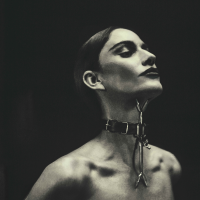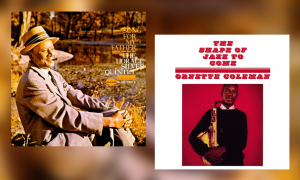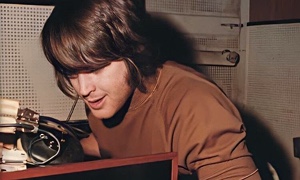Home » Jazz Articles » Building a Jazz Library » Blue Note Records: Lost In Space: 20 Overlooked Classic Albums
Blue Note Records: Lost In Space: 20 Overlooked Classic Albums

The legend of a ‘lost’ Hank Mobley live album continues to circulate. It may even be true. What is almost certainly true is that other treasures lie buried in the vault waiting to be discovered.
This list of twenty 1952—1972 releases has been put together with those folks in mind. It looks in the nooks and crannies to identify premier-league items which for one reason or another may have escaped wide notice on first release and, even if they have later been reissued in limited editions such as the Connoisseur, Tone Poet and Blue Note 80 series, still deserve wider recognition.
Thirteen of our twenty albums were released during or immediately after Blue Note's 1952—1965 belle epoque, the period when founder Alfred Lion was the label's producer. After Lion sold the company to Liberty in 1965, he continued as house producer until 1967. From then on, great albums, once the norm for Blue Note, became increasingly rare and the label went into a steady artistic decline. The revival began in 1985, when Bruce Lundvall was brought in as label president. In 2020, Don Was continues the good work Lundvall began.
The remaining seven albums were recorded and released in the half decade or so following Lion's departure, by his business partner Francis Wolff and the longstanding label artist, pianist Duke Pearson. Wolff and Pearson, who preserved much of Blue Note's essence and integrity in the face of unsympathetic corporate owners, both left in 1971.
All post-Lion Blue Note productions are sometimes sweepingly dismissed. This is unjustified. Between 1968 and 1972, the years covered here, the label released albums which were in perfect alignment with its historical trajectory as well as others which absorbed wider musical influences. Seven of the best of these two strands complete our list of twenty.
The legend of a "lost" Hank Mobley live album continues to circulate. It may even be true. What is almost certainly true is that more forgotten treasures lie buried in the vault waiting to be discovered and released. Meanwhile, one or two of the following items might serve as a substitute.
BLUE NOTE RECORDS: A CLOSER LOOK
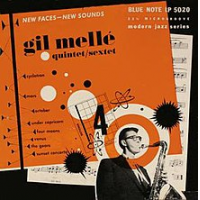 Gil Mellé
Gil Mellé Quintet / Sextet
1952
Painter, sculptor, saxophonist, composer and pioneering electronicist Gil Melle was at the intersection of avant-garde culture in 1950s New York City. Later in life he was also a keen amateur aviator, funding his hobby by composing the soundtracks for such immortal classics as Killdozer! (1974), Death Scream (1975) and A Vacation In Hell (1979). With his jazz hat on, Mellé created an adventurous mix of bop and twentieth-century classical. Quintet / Sextet is the first of four 10" LPs he recorded between 1952 and 1956 for Blue Note (all compiled on a double CD in 1998). The collective personnel includes drummer Max Roach, bassist Oscar Pettiford, guitarist Tal Farlow and a new boy in town, drummer Joe Morello. It was, by the way, Mellé who introduced to Alfred Lion to Rudy Van Gelder, and Quintet / Sextet was the first Blue Note album Gelder engineered.
 Howard McGhee
Howard McGhee Howard McGhee Vol. 2
1953
The debate about who recorded the first hard bop album ignores the fact that synchronicity generally leads a school of musicians to arrive simultaneously at the same destination. The two most frequently cited contenders for this dubious "first" are Miles Davis' All Star Sextet (Prestige) and Art Blakey's A Night At Birdland Vol. 1 (Blue Note), both recorded in spring 1954. The two albums were preceded by a clear twelve months, however, by Howard McGhee's Vol. 2, which was recorded in spring 1953 and released some three months later. The historically important composer and arranger Gigi Gryce, heard on alto, wrote two of the tunes and all the arrangements. Personnel includes pianist Horace Silver, guitarist Tal Farlow and bassist Percy Heath. Hard-bop first or not, Vol. 2 is, indisputably, McGhee's finest album.
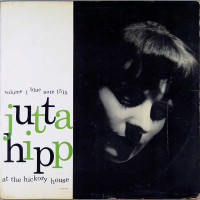 Jutta Hipp
Jutta Hipp Live At The Hickory House
1956
A major talent with a self-truncated career, the pianist Jutta Hipp was born and brought up in Germany. She became a displaced person after the second world war and moved to the US in 1955 on a visa arranged by the critic Leonard Feather. Her playing is a combination of soulful hard-bop and Lennie Tristano-like abstractions. On Live At The Hickory House, she is accompanied by the British bassist Peter Ind, an ex-student of Tristano, and drummer Ed Thigpen on a mix of jazz standards and Great American Songbook evergreens. Hipp was a vulnerable soul whose insecurities led her to become an alcoholic. She made her last recording in late 1956 and stopped playing piano altogether in 1960. She became a painter, commenting in later life, "With painting, they look at the work, not you."
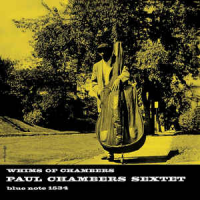 Paul Chambers
Paul Chambers Whims Of Chambers
1957
Premier league hard-bop of interest more for the frontline than its bassist leader, Whims Of Chambers was recorded in late 1956, when Paul Chambers was two years into an eight year spell with Miles Davis. The lineup features two other members of the Davis band, tenor saxophonist John Coltrane and drummer Philly Joe Jones. Donald Byrd takes the trumpet chair and Kenny Burrell is on guitar. Coltrane, Byrd and Burrell turn in engaging solos and Jones is his inimitable swinging self. The album is of interest, too, for the inclusion of two Coltrane originals, the hard-bop burner "Nita" and serpentine bopper "Just For Love."
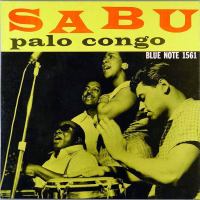 Sabu Martinez
Sabu Martinez Palo Congo
1957
Palo Alto is the first own-name album to be released by conga player Sabu Martinez, who in 1948 had replaced Chano Pozo in Dizzy Gillespie's band following Pozo's drugs-related murder. It is a cross-rhythm-rich fusion of Cuban and Puerto Rican ritual and dance musics and Martinez's most uncompromisingly Nuyorican release, with a five-piece conga and percussion ensemble augmented by double bass and two vocalists. In the 1950s, Martinez was the featured conguero on Blue Note albums by J.J. Johnson, Clifford Brown, Horace Silver and Art Blakey. He later moved into lounge work with artists such as Tony Bennett, Xavier Cugat, Harry Belafonte and Sammy Davis Jr. By the late 1950s, Gillespie's Cubop experiments of a decade earlier had become the foundation for a key strand in New York hard bop....
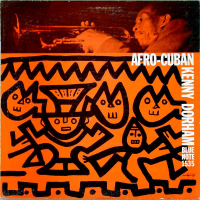 Kenny Dorham
Kenny Dorham Afro Cuban
1957
Trumpeter Kenny Dorham's label debut, Afro Cuban, was the first album on which he explored his fascination with Latin music, and predates the better known Una Mas (Blue Note) by six years. Dorham was the founding trumpeter with the band which later became known as the The Jazz Messengers, and the lineup here includes first generation Messengers tenor saxophonist Hank Mobley, pianist Horace Silver and drummer Art Blakey. Baritone saxophonist Cecil Payne anchors the horn section, which also includes trombonist J.J. Johnson on four of the seven tracks. Carlos "Patato" Valdes is on congas. Dorham was a fine composer and all but one tune here (Gigi Gryce's "Basheer's Dream") is a Dorham original. Raw when set alongside Una Mas, but none the worse for it.
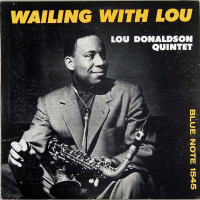 Lou Donaldson
Lou Donaldson Wailing With Lou
1957
Alto saxophonist Lou Donaldson is one of the talking heads in Sophie Huber's 2019 documentary, Blue Note Records: Beyond The Notes. In one segment, Donaldson recalls that when Alfred Lion asked him in 1952 if he would like to record for Blue Note, Lion said, "Can you play like Charlie Parker?" "I said I could," said Donaldson. "But, of course, I couldn't." Donaldson was being modest. He already had plenty of technique and could play the most intricate, serpentine bop toplines with almost as much speed as Parker—as he demonstrated on Art Blakey's landmark A Night At Birdland (Blue Note) in 1954. On the dozens of albums Donaldson went on to record for Blue Note under his own name, however, he moderated the tempos and upped the quotient of rhythm and blues licks, becoming a key figure in the emergence of soul jazz from hard bop. Wailing With Lou finds him starting along that path, with Donald Byrd the second horn. The ballads include Isham Jones' "There Is No Greater Love," given a reading which is nearly as gorgeous as Miles Davis' on Miles (Prestige, 1956).
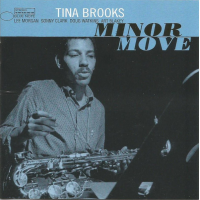 Tina Brooks
Tina Brooks Minor Move
1958, released 1980
A singular hard-bop talent whose life and career were ravaged by heroin, tenor saxophonist Tina Brooks recorded four albums for Blue Note between 1958 and 1961, only one of which, 1960's True Blue, was released during his lifetime. His final appearance in a recording studio was in 1961 and he passed, penniless and neglected, thirteen years later. Minor Move was Brooks' first release, fronting a quintet completed by trumpeter Lee Morgan, pianist Sonny Clark, bassist Doug Watkins and drummer Art Blakey. Quite why Blue Note did not release the album until 1980 remains a mystery. But the ensemble passages are sometimes a little ragged round the edges and Alfred Lion, a stickler for precision, may have thought he could get things tighter next time out (which he did, on True Blue). Posthumously, however, such niceties are irrelevant.
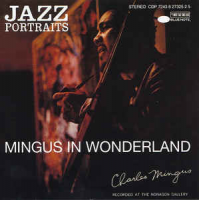 Charles Mingus
Charles Mingus Jazz Portraits: Mingus In Wonderland
1959
First released on United Artists in 1959, then with a messy history on Solid State and Liberty, Jazz Portraits: Mingus In Wonderland found a compatible home on Blue Note in 1994, when it was issued on CD for the first time. Recorded live at the Nonagen Art Gallery in New York in January 1959, the album presents bassist and composer Charles Mingus leading a superb quintet which includes new recruits alto saxophonist John Handy and tenor saxophonist Booker Ervin, who with drummer Dannie Richmond would form part of the larger band which recorded Blues And Roots (Atlantic) a month later. The pianist is Richard Wyands. The forty-four minute set consists of four extended tracks: three Mingus originals, including the immortal "Nostalgia In Times Square," and George Gershwin's "I Can't Get Started." A great album from what was a great year for Mingus (Mingus Ah Um was released on Columbia in the autumn).
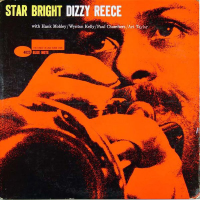 Dizzy Reece
Dizzy Reece Star Bright
1960
Trumpeter Dizzy Reece is a contemporary of fellow Jamaicans alto saxophonist Joe Harriott and tenor saxophonist William "Bogey" Gaynair, all three of whom carved out formidable reputations in London in the 1950s. Reece relocated again at the end of the decade, this time to New York, an ambitious destination for a British musician at that time. But, like the saxophonist and vibraphonist Tubby Hayes, he was amongst a handful of Brits who were taken seriously by New York musicians and audiences. A bop going on hard-bop soloist with a strong sense of melody, Reece recorded four albums for Blue Note between 1958 and 1960, all of them worth searching out. On Star Bright he leads a quintet comprising tenor saxophonist Hank Mobley, pianist Wynton Kelly, bassist Paul Chambers and drummer Art Taylor.
 Fred Jackson
Fred Jackson Hootin' 'N Tootin'
1962
The title suggests a honking and screaming tenor saxophonist and, though that sells Hootin' 'N Tootin' short, it does nail Jackson's formative experiences. His first job of note was a two-year spell with Little Richard in the early 1950s, after which he joined Lloyd Price's band. Jackson came to Blue Note via organist Baby Face Willette and, after making Hootin' 'N Tootin' , his only album as leader, recorded with organist Big John Patton, again for Blue Note, in 1963 and 1964. He then pretty much disappeared from the scene. A shame, because, though there is nothing groundbreaking about Jackson's playing or writing (all the tunes here are originals), he hits the soul-jazz / hard-bop nexus dead centre. The organist is Earl Van Dyke, who would join Motown Records' house band The Funk Brothers in 1963.
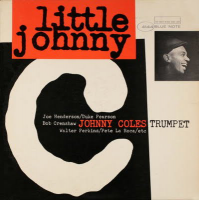 Johnny Coles
Johnny Coles Little Johnny C
1964
Always the best man, rarely the groom, Johnny Coles was highly regarded by bandleaders. From 1958—1964 he was Gil Evans' first call trumpeter when Evans was not working with Miles Davis, and he later worked with Charles Mingus, Herbie Hancock, Ray Charles, Duke Ellington and Art Blakey, among others. Little Johnny C, Coles' only Blue Note release, is among a handful of albums he recorded under his own name. His burnished sound fronts a heavyweight sextet which includes pianist Duke Pearson and tenor saxophonist Joe Henderson, who wrote the one non-Coles original on the album.
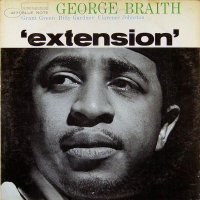 George Braith
George Braith'Extension'
1967
Saxophonist George Braith made his name in the mid-1960s on three Blue Note and Prestige albums which foregrounded his penchant for playing more than one horn at once, typically the soprano saxophone and the stritch. Truth to tell, Braith was merely good at the trick while Roland Kirk was awesome. Consequently, Braith's earlier albums sound rather gimmicky, a trap which Kirk's virtuosity precluded. By 'Extension', however, Braith had in the main moved on (or, perhaps, moved back) to his soul-jazz origins, to which he brought an adventurousness often lacking in the genre. He puts his stritch aside and plays soprano, alto and tenor, but mostly not at the same time. He is accompanied by guitarist Grant Green, organist Billy Gardner and long-serving James Moody and Jimmy Forrest alumnus, drummer Clarence Johnston.
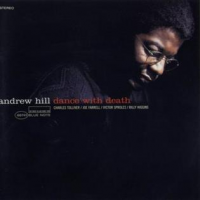 Andrew Hill
Andrew Hill Dance With Death
1968, released 1980
A blinder of an album, it is impossible to imagine Alfred Lion keeping pianist and composer Andrew Hill's Dance With Death on the shelf for over a decade had Lion still been in control of Blue Note after 1965. The album is important not only for Hill's performance and the quality of the material—six singular originals—but for the playing of his sideman, particularly trumpeter Charles Tolliver. Tolliver had burst on to the New York scene as a player and composer on Jackie McLean's It's Time! (Blue Note, 1965), with a style which the album's sleeve note writer, Nat Hentoff, nailed as possessing "solidity as well as daring." Produced by Francis Wolff.
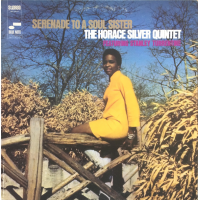 Horace Silver
Horace Silver Serenade To A Soul Sister
1968
Charles Tolliver shines again on Horace Silver's Serenade To A Soul Sister, sharing the frontline with tenor saxophonists Stanley Turrentine plus, on two of the six tracks, Bennie Maupin. The title of the opening track, "Psychedelic Sally," suggests a concession to the era but the music is foursquare in Silver's well established hard-bop meets soul-jazz trajectory. Silver appeared to bow to label pressure to stay "relevant" over the next few years, however, with albums such as the psychedelicized fusion set That Healin' Feelin' (1970)—which had a cover shot almost as unconvincing as the one on the inner sleeve of Muddy Waters's contemporaneous Electric Mud (Cadet Concept, 1968). But his heart was not in it (Silver was a vocal opponent of drug use, which put him at odds with the counterculture), and the albums are lesser fare. Produced by Francis Wolff.
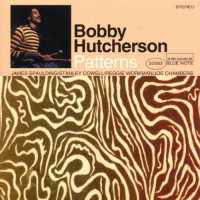 Bobby Hutcherson
Bobby Hutcherson Patterns
1968, released 1980
Though fans of Stick Up! (Blue Note, recorded 1966, released 1968), may disagree, vibraphonist Bobby Hutcherson's finest hour may well have been as a member of the sextet which together created Grant Green's masterpiece Idle Moments (Blue Note, 1965). The combination of players / composers is sublime: four tracks were written by drummer Joe Chambers, one by pianist Stanley Cowell, one by saxophonist and flautist James Spaulding (whose "A Time To Go" was a tribute to Martin Luther King, who was assassinated less than a month after the album was recorded). The fifth member of the band is bassist Reggie Workman. As this roll call suggests, Patterns is another heavyweight treasure whose release was delayed by Blue Note's immediate post-Alfred Lion owners, Liberty, as was Andrew Hill's Dance With Death (see above). Co-produced by Duke Pearson and Francis Wolff.
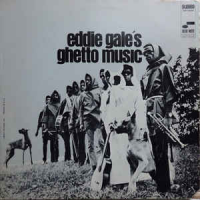 Eddie Gale
Eddie Gale Ghetto Music
1968
Trumpeter Eddie Gale was a well regarded player on the New Thing scene centred around John Coltrane in New York in the mid-1960s. He is reputed to have been on Coltrane's wish list for Ascension (Impulse!, 1965), but was out of town when the sessions were called. He is heard on another landmark New Thing album, however, pianist Cecil Taylor's Unit Structures (Blue Note, 1966). In the late-1960s, Gale recorded two albums under his own name for Blue Note—Ghetto Music and Black Rhythm Happening (1969)—which laid out the jazz-meets-funk-meets-chorale-vocals strand of spiritual-jazz being played in 2020 by musicians such as tenor saxophonist Kamasi Washington. Self-produced at Rudy Van Gelder's studios.
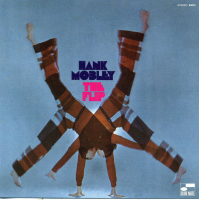 Hank Mobley
Hank Mobley The Flip
1969
Recorded in Paris with Francis Wolff in the producer's chair, The Flip is standard issue late-period Hank Mobley—that is to say, it is soulful, swinging, premier league hard-bop which does not try to break new ground so much as to dig deep into the tradition. It is at least as engaging as 1968's Reach Out! (Blue Note) and has an interesting, mostly European or European-based lineup: trumpeter Dizzy Reece (see above), trombonist Slide Hampton, pianist Vince Benedetti, bassist Alby Cullaz and drummer Philly Joe Jones. The band sounds like it is having a ball on five Mobley originals.
 Donald Byrd
Donald Byrd Ethiopian Knights
1972
Midway in his journey from hard-bop to disco-jazz tedium, Donald Byrd made a handful of groove-centric classics. Ethiopian Knights is the best of them. The album is bookended by two extended, loosely structured jams, the first clocking in just short of sixteen minutes, the second just short of eighteen. There is little between them, but the opener, "The Emperor," is the stand-out by a short neck. A deep-strata groove is maintained throughout by electric bassist Wilton Felder and drummer Ed Greene, over which William Henderson and Joe Sample spice it up on Fender Rhodes and organ. The horns hit the spot, too—a melismatic Byrd is on form alongside tenor saxophonist Harold Land and trombonist Thurman Green. Add Bobby Hutcherson on vibraphone and three, count 'em, electric guitarists and it is hardly surprising that "The Emperor" is a stone killer. Produced by George Butler.
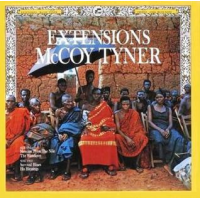 McCoy Tyner
McCoy Tyner Extensions
1972
An oft overlooked gem in pianist McCoy Tyner's catalogue, Extensions looks ahead to his culturally inclusive work on Milestone later in the 1970s. The band is completed by alto saxophonist Gary Bartz, tenor and soprano saxophonist Wayne Shorter, harpist Alice Coltrane, bassist Ron Carter and drummer Elvin Jones. Coltrane's harp glissandos set a mood for side one, track one's "Message From The Nile," before the track morphs into a more assertive groove. There are strong solos from Tyner, Shorter, on soprano and vocalized tenor, and Coltrane. "The Wanderer," which follows, is medium-fast hard-bop. The other two tracks are the medium-fast "Survival Blues," which edges into atonality, and "His Blessings," a peaceful modal ballad which take us back into the mystic. Produced by Francis Wolff.
Photo: Hank Mobley
Tags
PREVIOUS / NEXT
Support All About Jazz
 All About Jazz has been a pillar of jazz since 1995, championing it as an art form and, more importantly, supporting the musicians who make it. Our enduring commitment has made "AAJ" one of the most culturally important websites of its kind, read by hundreds of thousands of fans, musicians and industry figures every month.
All About Jazz has been a pillar of jazz since 1995, championing it as an art form and, more importantly, supporting the musicians who make it. Our enduring commitment has made "AAJ" one of the most culturally important websites of its kind, read by hundreds of thousands of fans, musicians and industry figures every month.








